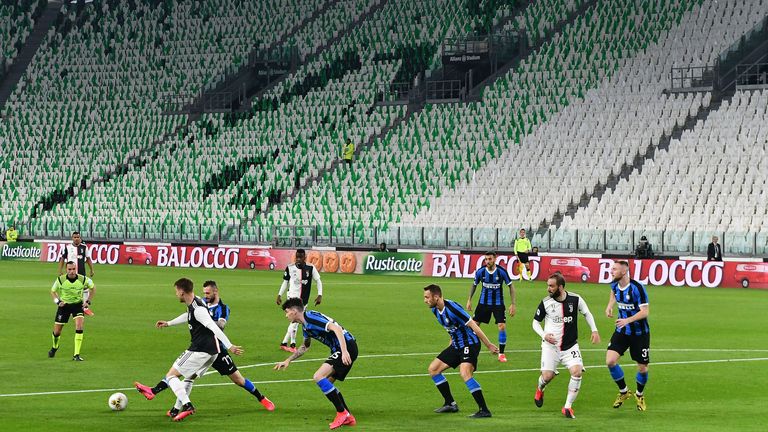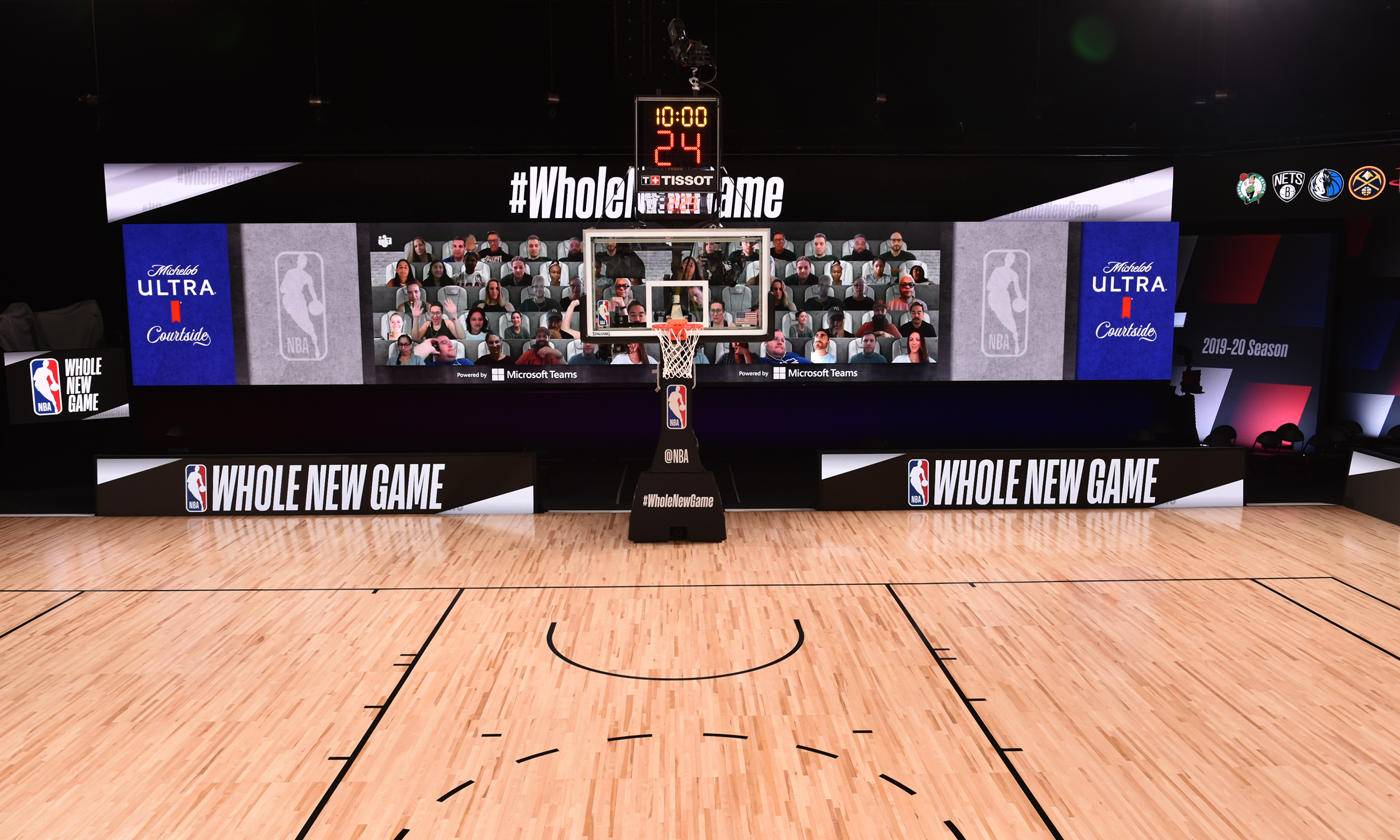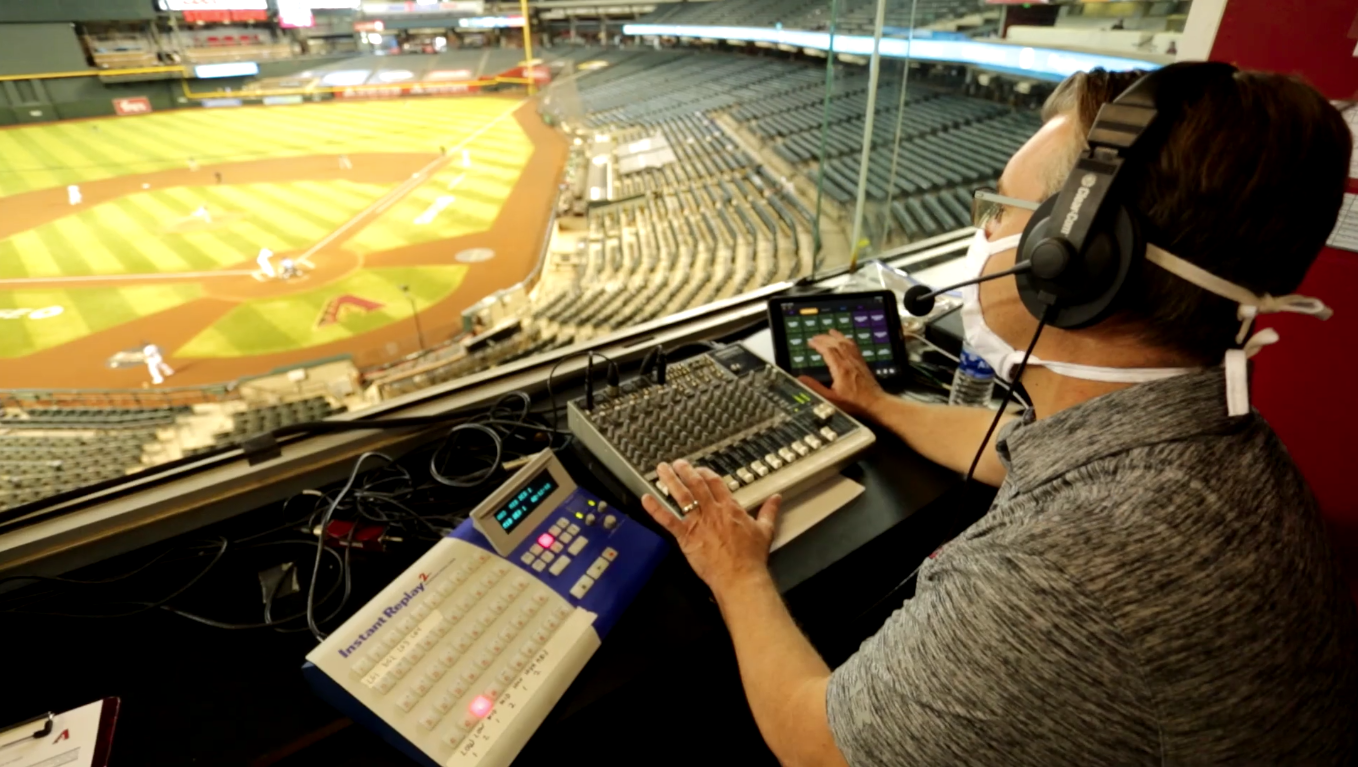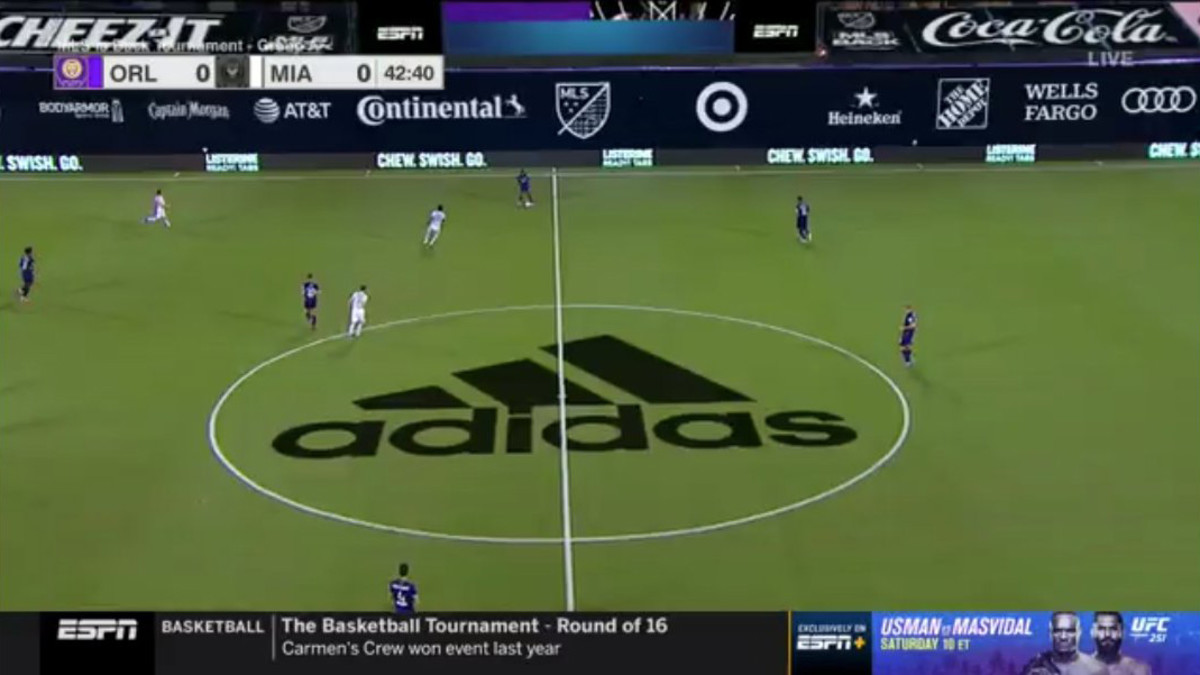2020 in Review: A Singular Year for Sound
In a time of immense challenges, audio technology and people proved innovative and resilient
Story Highlights
“Unbelievably believable.” That’s how former Washington signal-caller and current Ravens QB Robert Griffin III described his Heisman Trophy win in 2011. Nine years later, the contradictory phrase aptly describes how the 2020 season played out and COVID-19 silenced the fields, tracks, and courts of world sports. It was unbelievable, but the unreal quickly became all too real, with professional, college, and high school sports struggling to find ways to play games without literally killing the players.
It set the stage for the audio story of the year, likely the audio story of the decade: how — or even whether — to re-create the sonic emotion of fans in the stands, both on the field and on the air.
Over There
The UK was first out of the gate with what would euphemistically become known as “enhanced” sound. Sky Sports, BT Sport, and the BBC worked with FIFA 20 creator EA Sports, which drew on 1,300 content assets to create a suite of club-specific crowd sounds designed to mimic the in-venue atmosphere of a match. Dubbed “EA Sports Atmospheric Audio,” the audio files were tailored to each team and stadium and mixed for broadcast by engineers familiar with both.

During the pandemic, Sky Sports deployed “enhanced” crowd sounds for broadcasts of fan-free Premier League matches.
European broadcasters took the initiative further: Premier League games could be viewed with or without the artificial crowd noise, depending on the channel selected. For example, crowd noise was a feature of games broadcast on Sky Sports Main Event and Sky Pick. Sky Sports Premier League, on the other hand, eschewed artificial sound, allowing the shouts of players in empty venues to accompany the commentary. Viewers of Premier League matches on BT Sport had the option to turn the crowd noises on or off via the network’s “red button” feature.
However, European football, whose crowds were largely banned from venues, never warmed to the idea of pumping enhanced audio through venue PA systems. In the U.S., the much wider variety of broadcast sports made for a smorgasbord of approaches to audio on-air and in the stadiums and arenas.
Over Here
The NBA was the first U.S. league to deploy a significant crowd-sound system: a multi-speaker PA focused on the courts at the Walt Disney World’s Wide World of Sports complex near Orlando. With the advantage of a highly controllable environment, a “bubble” that brought 22 teams to a single location to keep COVID out, the in-venue sound could be fine-tuned on an almost daily basis.

In a “bubble” at Wide World of Sports complex, NBA kept players safe from COVID and provided fine-tuned venue sound from archived matches.
The sounds used were an amalgamation of audio tracks from previous NBA games and audio tracks captured by Firehouse Productions, an audio vendor for league special events, such as the All-Star Game. The sounds drew praise for their authenticity. However, the execution of “playing” those sounds —by up to three crowd-sound mixers, many of whom had never mixed for television, and by audio producers balancing the choice of audio files and intensities ranging from muted annoyance at a missed free throw to a winning 3-pointer at the buzzer — left some room for improvement.
Firehouse Productions VP Mark Dittmar attributes that to the novelty of artificial crowd sounds and to the fact that the system was developed and implemented on the fly in barely four months.
The NBA’s solution was radical also in that the enhanced audio was both sent directly to broadcast and pumped through venue PA systems installed specifically for that application. It was the first time that athletes would hear the artificial fan sounds (which complemented a visual component: fans at home using the Microsoft Teams app populated hundreds of square feet of video displays lining two walls of the court).
Other sports created their own versions of enhanced sound for games. MLB, for instance, began its restart with a self-developed system using sound files from videogame developer San Diego Studios, a branch of Sony Interactive Entertainment. Most games were played in teams’ own stadiums (the shortened schedule was jiggered to minimize travel), and broadcasts were backhauled to the league’s Studio 3 in Secaucus, NJ. West Coast games were routed to Fox Sports’ Pico facility in Los Angeles under the remote-production rubric of Home Run Production (HRP). Broadcast-audio flypacks were set up onsite.
“We can control up to eight faders remotely from either Secaucus or Pico,” explained lead A1 Joe Carpenter during the season. “We can mix local elements, like IFBs and anything else that needs to be done in real time through the GUI. Then everything else gets muxed back to the studios.”
Announcers were scattered throughout the country, working from their homes or nearby voice-over studios via a variety of video codecs, such as Zoom and WebEx. MLB mandated a single television feed per stadium, to be used by the home broadcaster with the equivalent of an international feed available for the visitors’ broadcast; one or two visitors’ cameras were permitted, depending on the venue.
For postseason play, though, MLB switched to a strategy more like that of the NBA, bringing teams to two stadiums, in California and Texas. It also brought in another vendor for enhanced sound, Sonofans, whose mixers were able to work remotely from the broadcasters’ studios instead of having to be at the venues, further reducing exposure to contagion.
Sonofans also became the vendor for most of Fox Sports’ NFL games when that season began. Initially, the NFL had built its own in-house crowd-sound platform, relying on NFL Films’ stock of team- and venue-specific audio tracks; other networks continued to use the NFL-supplied crowd sounds. And whereas the NBA designed its enhanced-audio system for both broadcast and live sound, NFL fields remained eerily quiet for the most part, with the enhanced audio going just to air.
The NHL had the advantage of being an intrinsically noisy sport, and, when it restarted its season in July, it limited play to just two venues, both in Canada. The league built its own version of enhanced audio for use on-air: a redundant pair of Ableton Live audio-software systems on Apple laptops held several gigabytes of sound effects from the EA Sports libraries recorded in NHL arenas for videogames, such as EA’s NHL 20. The inventory included two separate crowd-sound beds and an array of reaction sounds, such as oohs and boos, as well as team-specific cheers and chants.
Soccer went the other way. ESPN broadcast MLS games without artificial crowd sounds, instead focusing on the game’s natural sounds, revealed in the absence of the fan noise. ESPN Senior Audio Engineer Florian Brown pointed out that viewers could hear player field chatter, a feature that also applied to golf broadcasts.
“It’s a ton of great sound,” he said, to the point where some producers and directors were asking announcers to lay out more so that viewers could hear more of the athletes. “Soccer in particular sounds completely different from normal.”
Tennis split the difference in another manner. At the US Open at the USTA Billie Jean King National Tennis Center, ESPN used ambient audio as part of the main broadcast feed and also provided it through its app. However, the sound was not sent through the venue PA systems, which were used for music and announcements.
Other enhanced-sound vendors entered the COVID-spurred fray of ersatz audio. For instance, UK-based Salsa Sound, which had been providing some crowd sound for English Premier League broadcasts, did the same for CBS’s NWSL Challenge Cup broadcast and for several MSL and USL games. Using vCROWD hardware and software, the system was also deployed by CBS for several college football games, where no fans were allowed at all.
In the Trenches
Initially, broadcast sports’ front-line troops, the A1s who mix the shows, largely opposed the use of fake sound to build an audio underscore for games on television and radio. Their concern was that artificial sound would undermine the authenticity of sports and, potentially, even impair performances on the field.
“The players and us rely on the cheering, especially of the home crowd,” said one A1 at one of several DTV Audio Group Zoom confabs examining the issue. “And that sounds and feels very different from any fake crowd noise.”
Sniffed another, “We’re not making a film. What we’re doing is documenting a live event, and we’re not adding sweetening or sound effects. It needs to be accurate and realistic.”
However, network and venue management, watching revenue fall precipitously as seasons hit the brakes, pushed for solutions to restore a sense of reality as they contended with a myriad of often confusing, sometimes contradictory local and state rulings on whether sports could restart. Eventually, many in the A1 corps came around, even if it required some rationalizations.
Turner Sports/Warner Media Senior Audio Engineer Dave Grundtvig, the engineering architect of the NBA’s under-court contact-microphone arrays that pick up effects sound, emphasized that this was not “fake” sound but rather “enhanced and sweetened, and it’s truly an art what [the crowd-sound mixers] are doing. They’ve embraced and adapted it and have the tools to make it work.”
Associate Director/Remote Production Operations at ESPN Henry Rousseau summed up the effort: “It augments the situation we’re in now. It doesn’t take the place of fans but gives a sense of what it used to sound like, without overexaggerating [it].”
A Normal Start
Hard to believe, but 2020 started out normally enough. Stadiums and arenas were upgrading live-sound systems as they sought to pull fans off their couches. Flagship brands L-Acoustics, d&b audiotechnik, and Meyer Sound Labs dedicated departments or personnel to the sports-venue vertical and provided sizable demo rooms at trade shows like January’s NAMM Show, showing off concert-quality sound for sports venues.
“Music and entertainment in general have been interconnecting with sports at levels we’ve never seen before,” Matt Larson, VP, professional audio products, DiGiCo, told SVG during the NAMM Show.
That was clear a few weeks later. The halftime show at Super Bowl LIV at Miami’s Hard Rock Stadium marked the first collaboration between the NFL and Jay-Z’s Roc Nation. Performers Jennifer Lopez and Shakira brought a new degree of low-frequency energy, requiring PS provider ATK Audiotek to deploy more subwoofers than ever.
2020 was also a year when IP met REMI, a serendipitous coupling that helped effectuate the rapid shift to much of sports’ suddenly enforced remote operations, with announcer, mixers, EVS operators, and other production personnel working literally “at home.”
The shift to IP-based intercom-signal transport and management had become more pronounced over the preceding year, reflecting advances in the bandwidth and reliability of network-based systems as well as increased application to broadcast systems and uses. The year saw the introduction of a number of remote-oriented products: for example, Calrec’s VP2 virtualized mixing system, SSL’s SOLSA (SSL On/Offline Setup Application, Wheatstone’s ReMIX remote-mixing application, and Lawo’s mxGUI remote-control software.
But the move to IP-based systems was also a collateral effect of the increased use of REMI-style production of sports broadcast, itself an economy-oriented move predating the pandemic, notes Martin Dyster, VP, business development, Telos Alliance TV Solutions Group, and intended to improve the workflow between the remote site and headquarters.
“The [IT networking] technology is mostly there,” he explains, :but the challenge has been in dealing with the latency that longer REMI productions result in, such as spill-back getting to the talent’s headphones. That’s less a matter of technology than it is of technique. It wasn’t a major problem for short hauls, but, as the distances get longer, the problem becomes harder.”
Networked tools for both broadcast and live sound arrived at a propitious time, helping sports find some footing during the most challenging obstacle it may have ever faced. Many of the cobbled-together solutions and tactics will be there to make the second COVID season for at least some sports, notably basketball and hockey, that much easier to start.


